This article will be providing a detailed beginners guide on how to setup a tank for your Betta fish.
We will be covering topics from the choice of tank, to the environment and equipment needed for your little friend to live a happy and healthy life.
Step 1 – Choosing the Tank
The tank you use is very important, an ill-chosen tank could mean the difference between your Betta merely surviving or thriving and living a long healthy life.
Picking a tank with a lid is important as it will help to prevent your Betta from jumping out. Prevent evaporation and stop external elements from getting into the tank.
Tank Types
Small Tanks
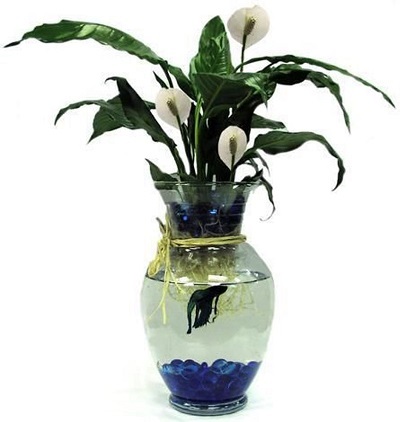
No more then a single Betta either male or female is able to live in a smaller tank.
Anything under 5 gallons should be treated as a temporary home or as a fish carrier similar to that of a dog carrier.
10 Gallon Tanks
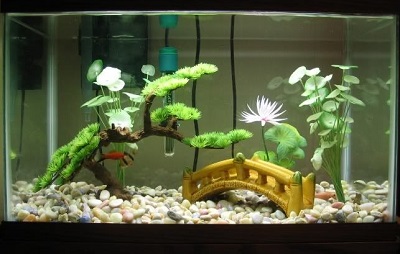
A single male Betta will be happy to live in a 10 gallon tank by themselves.
A sorority of up to 5 females may also be comfortable with sharing a 10 gallon tank as long as there are plenty of places for the females to hide, and adequate filtration.
- A shallow tank, will allow the Betta to have both the swimming room they crave while allowing them to easily reach the waters surface to breathe air.
They would also be more comfortable swimming near the bottom and hiding in caves and crevices then in a deeper tank. - A tall and skinny tank would allow for longer plants to grow, reaching up to the surface providing the Betta(s) somewhere to hide and play.
The deeper the tank the less likely they would be to swim down to the bottom.
20 (+) Gallon Tanks
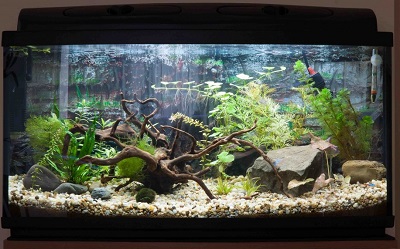
Regardless of how much room your Bettas have to swim around. You should never place a male Betta with other Bettas.
A sorority of females would be more likely to be happy with the extra room as there could be less territorial disputes.
- You can start to consider getting your Betta some Tank Mates if using a larger tank. For more information see our tank mates article
- A larger tank would allow for some impressive aquascaping features with more room to grow more plants. Here is an article on aquascaping your tank.
Popular Tank Models to Consider
- Office desk tanks: These smaller tanks are good as a temporary home for your Betta, ideal for taking them to work with you.
- 5 Gallon Tanks: Ideal for keeping a single Betta fish on its own or for rearing fry.
- 10 Gallon Tanks: Multiple female Bettas may be kept in a single 10 gallon tank. Bottom feeders such as catfish may also be kept in the same tank.
- 20 Gallon Tanks: Tank mates and more decorations can be kept in the same tank as your Betta
Now that you know the size of the tank that you are looking to use. You need to make sure that you have the appropriate table, shelf or stand that can hold and support the size and weight of your chosen tank.
Step 2 – Equipment
Heater, Filtration, Water Conditioner and Lighting
Bettas need warm water at 78-80f as they are adapted to a tropical climate. This means that if the temperature drops too low (below 74f) or fluctuates too regularly then it will cause your Betta to get ill.
The type of heater you use, would be dependent on the size and type of tank you are using.
A suitable filter for a Betta tank would be either a small sponge filter or a hang-on-back filter (mechanical filtration).
Things to keep in mind is that Bettas dislike a lot of water movement because swimming constantly against a current exhausts them, so its important to get a filter that has adjustable flow settings.
Alternatively, you can choose not to have a filter at all as long as you have a lot of plants. If you have at least 50% of the tank space full of plants, they will help to filter out the fish waste byproducts.
This can not be done how ever if there are a large amount of fish within the tank.
A suitable light source would be needed for your tank, if it is in a location that doesn’t receive direct and indirect sunlight throughout the day.
A quality light system would emit UV light that’s necessary for plants to grow. The light can also help to highlight your Betta’s coloration, especially its iridescent scales.
Examples of Required Equipment:
- Heater: Most heaters need to be fully submerged in order to prevent burn out.
- Filter: Filters will draw water from one end of the tank and returning it at the other end or from above the tank.
- Lights: White and blue lights offer different lighting frequencies for your fish and plants. They should sit above the tank and not in the water.
- Water Conditioner: Used to get the pH levels right and remove any chemical, metals and toxins.
- Rubbing Alcohol: Disinfects the tank surfaces.
Step 3 – Decor and plants
Substrate
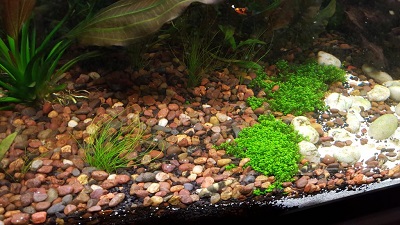
1-2 inches of gravel, sand or a mix of both (with the upper quarter gravel)
With mechanical filtration (hang on back filter) substrate is not necessary, however aesthetically it won’t be as pleasing because the fish’s waste will be visible on the ground and in the water when it gets swept up by the filter.
Note – beware of fluorescent pink gravel as its been known to leech chemicals that are harmful to your fish.
For an all in one substrate click here.
Hardscape
Rocks
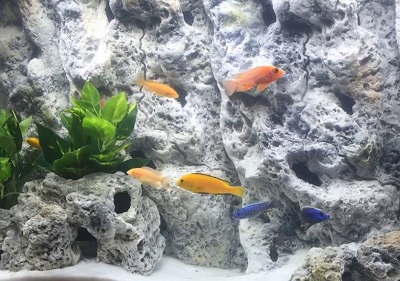
Bettas enjoy resting on rocks and getting into tight and unusual spaces as part of their hunting behavior so its important to only utilize rocks that are smooth, as sharp edged or rough textured ones (eg lava rock) may tear the Betta’s delicate fins.
If you choose to stack the rocks into some kind of formation, its important to make sure they are secure and will not shift at all, this can be accomplished by using aquarium grade glue.
Most rocks found at your local pet store would be made of resin or plastic. Natural rocks can be used but it is inadvisable to use rock found in the open environment.
They could contain chemicals or toxins and possibly parasites or fungus.
If you would like to use real rocks in your aquarium, only source rock decorations from a reputable dealer.
Examples of Rock Decorations
- Fake Rocks: These can come decorated to look like they are cover in moss. They can also be used to hide tubes if need be and are very light.
- Rocks and Pebbles: Real rocks offer a more natural look and can bring a unique look to the tanks environment.
- Aquarium Glue: Good for binding items to the sides and base of the fish tank.
Driftwood

There are many types of driftwood to choose from and each piece has its own individual shape and character.
You can get creative with it and attach mosses, intertwine plants through and around the wood or even mimic an underwater bonsai tree.
Mopani wood will sink in the water instantly, whereas other types such as spider wood and bog wood will need to be waterlogged in order to sink, or attached to a piece of slate which can be hidden under the substrate.
All driftwood will break down in the water over time, creating tannic acid which will tint the water a brownish tea cast, however water changes can dilute it and using chemical filtration (carbon cartridges) will eliminate it entirely.
Most driftwood will last a year or more depending on the size, type and the condition that its kept in. We have a lot of good info about this in our aquarium wood article.
Artificial driftwood can also be used instead of real drift wood. These can look relatively realistic and can make a good substitute.
Examples of Driftwood Products
Catappa leaves/Indian almond leaves
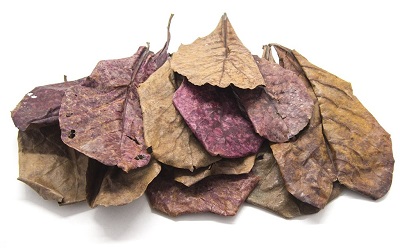
For a more natural look, you can put dried Indian almond leaves on the floor and as well as releasing tannins, it also boosts a Betta fish’s and encourages it to ‘hunt’ in the leaf litter.
Bags of Catappa leaves can be found here.
Plants
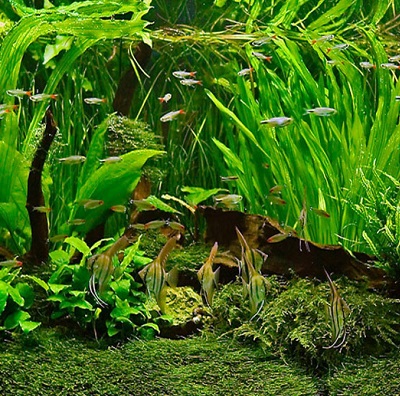
For the beginner there are many aquatic plants that take very little care, and do not need much light to live.
They also do not need to be scrubbed clean regularly, don’t discolor and don’t have to have sharp edges sanded smooth like is often required with plastic plants.
Bettas like to hide in floating foliage such as wisteria and water lettuce, rest on large leaves (Anubis or lotus plants) and hunt or search in mosses (like java moss and willow moss.)
Java fern and any cryptocoryne species are also easy to keep plants that can be easily manipulated to suit a desired layout.
For a more detailed article on plants and plant keeping, you can read our article on live aquarium plants for your Betta fish.
Toys
This is optional. You can add some simple toys to your tank if you want to. Our betta fish toys article has a an interesting list of toys that you can use in your Betta’s tank.
Time to Start Setting Up Your Tank
- Rub down the inside of the tank with the rubbing alcohol. It will evaporate as it dries off.
- Fill about a quarter of a bucket with the substrate. While filling the bucket with fresh water, stir the substrate around until the water flowing out is as clear as the water flowing in.
- Set aside and repeat the process until the required amount of substrate has been cleaned.
- Wash any decorations under running water, DO NOT USE SOAPS
- Place the empty tank in the location that you would like to keep it.
- Glue down any decorations that need to be anchored to the bottom, the glue package should state how long to wait before adding water.
- Place your substrate into the tank, spreading it around with a brush or rack and fill in any gaps where needed.
- Set up your filter, air pump if required, and heater.
- Add your water to the tank and place the plants and decorations where they are needed.
- Test all of the equipment to ensure that they are functional and ideally setup.
- Follow the steps in this article here to cycle your water.
- After the water has been cycled and the water conditioner added.
- Acclimate your fish by floating their bag in the tank and drip feeding tank water into their bag.
- Release your fish into their new home.
Now that we have setup the fish tank, its time to sit back and watch your fish explore their new home.
A basic setup is very basic indeed, and you may have noticed through some of the linked articles that a tank setup can become quite complex indeed.
Ultimately your skill level and budget should be the deciding factors in how to setup your tank.
Remember that as long as your fish’s living requirements are met, a healthy home will give you a healthy and happy fish.
Thanks so much! My guy was languishing and didn’t realize the small air pump action may have been stressing him out. I wondered if that thing was necessary….I see today Oscar (my betta) surfaced for the first time in awhile, the night is young, so we shall see.